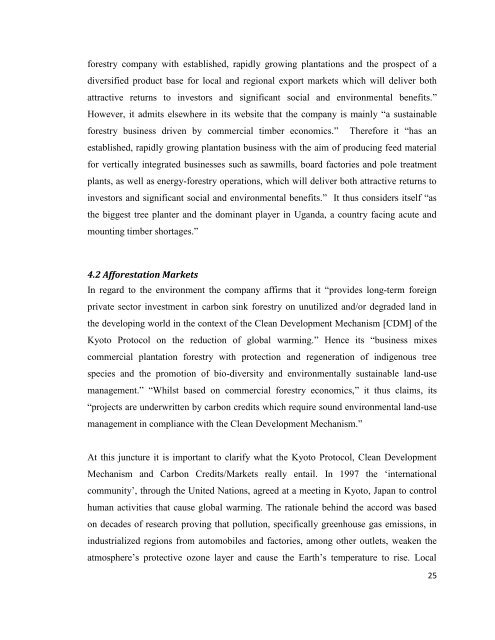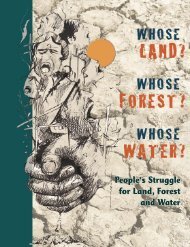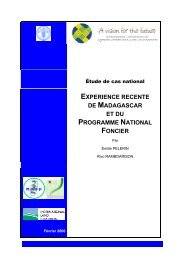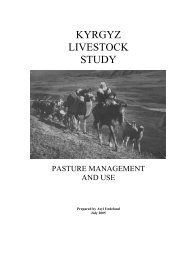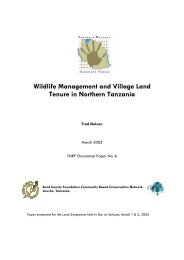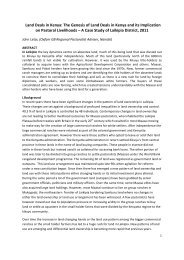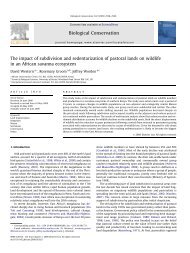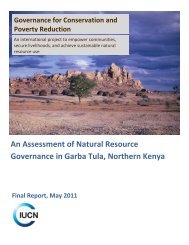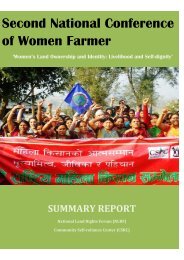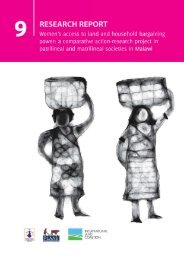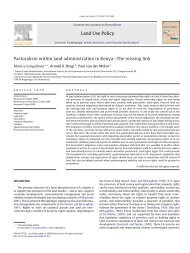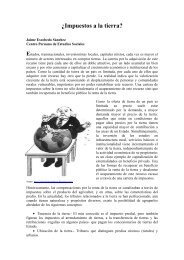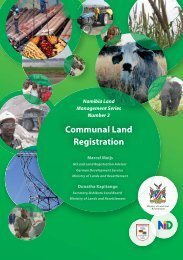accumulation by land dispossession and labor ... - Land Portal
accumulation by land dispossession and labor ... - Land Portal
accumulation by land dispossession and labor ... - Land Portal
You also want an ePaper? Increase the reach of your titles
YUMPU automatically turns print PDFs into web optimized ePapers that Google loves.
forestry company with established, rapidly growing plantations <strong>and</strong> the prospect of a<br />
diversified product base for local <strong>and</strong> regional export markets which will deliver both<br />
attractive returns to investors <strong>and</strong> significant social <strong>and</strong> environmental benefits.‖<br />
However, it admits elsewhere in its website that the company is mainly ―a sustainable<br />
forestry business driven <strong>by</strong> commercial timber economics.‖ Therefore it ―has an<br />
established, rapidly growing plantation business with the aim of producing feed material<br />
for vertically integrated businesses such as sawmills, board factories <strong>and</strong> pole treatment<br />
plants, as well as energy-forestry operations, which will deliver both attractive returns to<br />
investors <strong>and</strong> significant social <strong>and</strong> environmental benefits.‖ It thus considers itself ―as<br />
the biggest tree planter <strong>and</strong> the dominant player in Ug<strong>and</strong>a, a country facing acute <strong>and</strong><br />
mounting timber shortages.‖<br />
4.2 Afforestation Markets<br />
In regard to the environment the company affirms that it ―provides long-term foreign<br />
private sector investment in carbon sink forestry on unutilized <strong>and</strong>/or degraded <strong>l<strong>and</strong></strong> in<br />
the developing world in the context of the Clean Development Mechanism [CDM] of the<br />
Kyoto Protocol on the reduction of global warming.‖ Hence its ―business mixes<br />
commercial plantation forestry with protection <strong>and</strong> regeneration of indigenous tree<br />
species <strong>and</strong> the promotion of bio-diversity <strong>and</strong> environmentally sustainable <strong>l<strong>and</strong></strong>-use<br />
management.‖ ―Whilst based on commercial forestry economics,‖ it thus claims, its<br />
―projects are underwritten <strong>by</strong> carbon credits which require sound environmental <strong>l<strong>and</strong></strong>-use<br />
management in compliance with the Clean Development Mechanism.‖<br />
At this juncture it is important to clarify what the Kyoto Protocol, Clean Development<br />
Mechanism <strong>and</strong> Carbon Credits/Markets really entail. In 1997 the ‗international<br />
community‘, through the United Nations, agreed at a meeting in Kyoto, Japan to control<br />
human activities that cause global warming. The rationale behind the accord was based<br />
on decades of research proving that pollution, specifically greenhouse gas emissions, in<br />
industrialized regions from automobiles <strong>and</strong> factories, among other outlets, weaken the<br />
atmosphere‘s protective ozone layer <strong>and</strong> cause the Earth‘s temperature to rise. Local<br />
25


